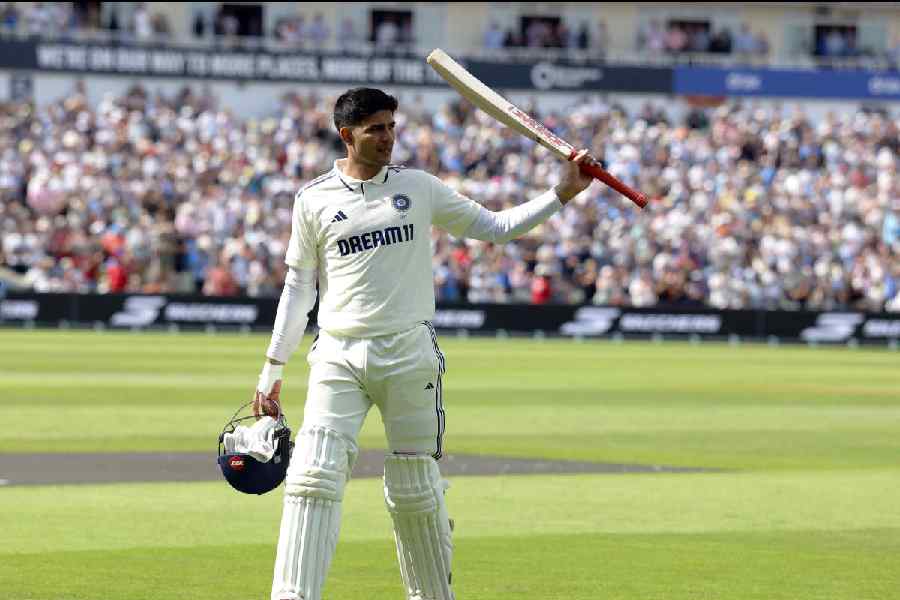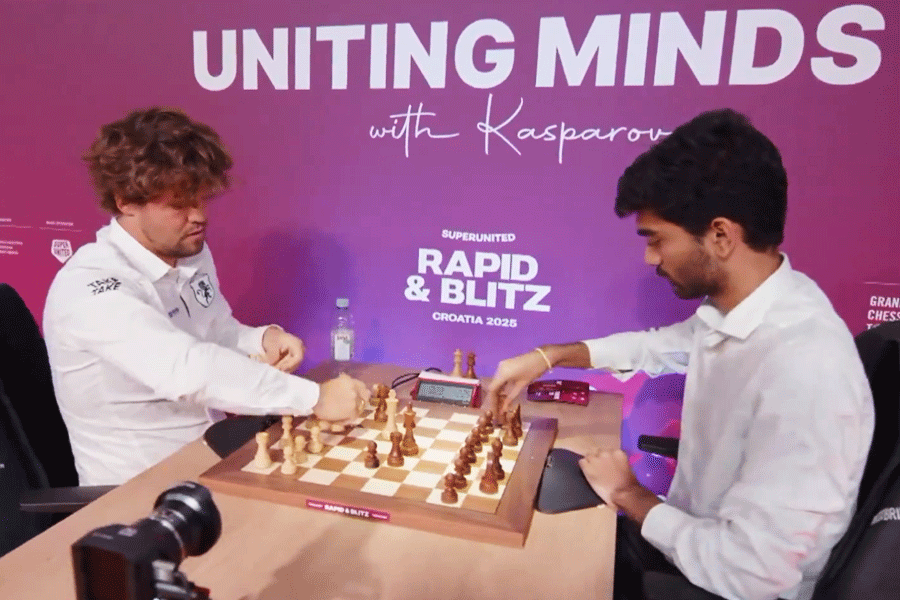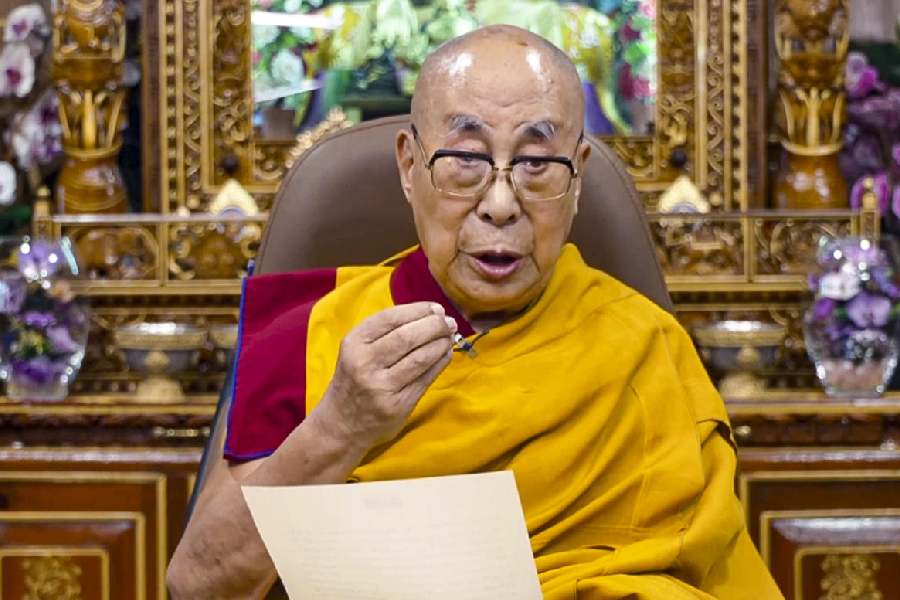 |
| The poster of How to Cross a Road, a comedy on the complexities of crossing the road |
Why film?
Because it’s easy. According to these young enthusiasts, anyone armed with a camcorder or a DSLR with moving picture options and knowledge of certain software can make a film.
What makes movie-making more appealing than other youthful forms of expression is the variety of mediums that one can use — music, painting, light, sound, narration and motion picture.
Some of the youngsters, however, seem to prefer being called “documentators” instead of filmmakers, since most of them try to present reality as they see it.
“I believe cinema is the most powerful tool of expression. It combines everything — visuals, sounds, emotions and stories — into a composite whole and projects itself onto a huge screen in front of us,” says Aditya Sengupta of St. Xavier’s College, who has made a number of short films and won several prizes for them.
The subject of their desire
Nothing, from fiction to current socio-political affairs, is beyond the camera lens for GenX. Some, like Tushar Pandey and Shubham Dasgupta, mass communication students of Asutosh College, prefer psychological thrillers, because they “like to deal with the workings of the human mind”. Others like Sayantan Roy of St. Xavier’s has a penchant for fantasy and his films cover everything from comedy, to sci-fi to horror.
The students are not afraid of experimenting. How to Cross a Road by Aditya is a comedy on the complexities of, well, crossing a road, while because. by Ayushman Mitra, third-year, St. Xavier’s, is the story of a gigolo’s interaction with his client’s daughter.
Deboshmith Chatterjee and Rwikjit Roy, also students of St. Xavier’s, have set up Norwegian Wood Production, which made The Bicycle Diaries. It’s about a person who has travelled 156 countries on his bicycle.
Meghdut Roy Choudhury of Techno India College believes in spreading social messages through his films. “My friends and I feel that our films should have a message. Our next film on street dancers is an attempt to keep the culture alive and give them recognition,” says Meghdut.
 |
| Some masters who inspire (from left): Chris Nolan, Satyajit Ray, Martin Scorsese and Roman Polanski |
Discussions start mostly during adda sessions, whether at the Green Benches in St. Xavier’s, the Presidency canteen or World View at JU. Scripts are narrated over colas, often long after college hours.
“We try to be thorough professionals but we have our share of fun as well. It’s like a big party and at the end of it, we have a film to show,” laughs Ayushman.
Who they look up to
Martin Scorsese, Roman Polanski, Gaspar Noe, Akira Kurosawa, Satyajit Ray, Ritwik Ghatak, Federico Fellini, Chris Nolan, the Coen Brothers, David Lynch and Stanley Kubrick, Darren Aronofsky, David Fincher, Michel Gondry, Richard Linklater, Sergei Eisenstein, Wes Anderson and Anurag Kashyap are the names that came up when asked about their inspiration. Some are even inspired by music videos and sitcoms like How I Met Your Mother.
Tools of the trade
High-definition camcorders are a clear favourite for all students but for those who do not have access to such gadgets, the video mode of DSLR cameras comes to the rescue.
The favourite camera used is the Cannon EOS 550D. Sony HVR Z1p, PD 170, PD 177 and P2Hd are also used.
Saumojit Goswami, a second-year animation student of Brainware, shoots with a basic Kodak C533 digicam, while Bihan Sengupta, a first-year student of mass communication at Asutosh College, uses a handycam. As do his classmates Tushar and Shubham.
Sayantan, who used a PD 170 DV camera for his last film Random Thoughts (of a Conflicted Mind), dreams of owning a Canon EOS 7D, which costs close to Rs 1.5 lakh.
 |
| A poster of Bicycle Diaries, a film about a person who travelled 156 countries on his bicycle |
The young filmmakers, armed with editing software like Final Cut Pro, Nero Vision, Cyberlink Power Director, Cool Edit pro 2.1, Adobe Premier, FL Studio and Apple Final Cut, mostly handle the post-production work themselves or team up with friends who have a better grip on the process.
The students of St. Xavier’s are allowed to borrow the college camera and use the Apple Studio on campus for editing.
Syllabus and some
Some institutions like Jadavpur University and St. Xavier’s College offer courses on filmmaking but the director bug has bitten even those studying other subjects.
Students who are not part of the film studies departments learn how to wield the moving camera and other basics of filmmaking on their own or from “knowledgeable” friends. The film studies departments offer courses on the technical aspects of filmmaking as well as film theory, including papers on the works of renowned filmmakers.
The hurdles
Are many. Though it’s far easier than before and it’s loads of fun too, making a film is serious business. From working within a tight budget to getting permission to shoot in certain places, putting together a film is still a Herculean task, especially for youngsters.
Most students form informal production groups to pool in their resources, be it money or technical know-how. Asutosh College students Bihan, Tushar and Shubham have started Radius Productions. Some of these groups straddle campuses. From Techno India College, Meghdut Roy Choudhury, Ritwik Sen and Sayan Chatterjee have joined hands with Gautami Hazra of St. Xavier’s and Biaas Sanyal and Deeptarko Choudhury of JU to start BlooperHouse Films.
There’s hardly any money to pay actors. So, the “star” cast is usually friends who are willing to face the camera or want to kill time. Some do it because they owe their friends a favour.
“My friends asked me to act in a film. It was during my vacations and I had nothing better to do, so I agreed,” says Shahana Yasmin of Presidency University, who acted in The Other Face of Homelessness by BlooperHouse Films.
The music, if not self-composed, is usually also by friends, free of cost.
Deeptarko Choudhury, a first-year student of English at JU, composes music and the background score for shorts.
“I want to be a music director. What better way to learn than through practical ventures?” asks the 19-year-old, who has worked for films like The Vitruvian Women and the Calcutta leg of Cycling with the Ashes.
Showtime
Displaying their art is no problem for these young filmmakers, thanks to Facebook and YouTube. Social networking sites not only provide them with a free platform to share their art but also help them get feedback from friends, colleagues and even strangers.
Over the last couple years, Calcutta has become even more display-friendly. Most college fests have short film competitions, which give the students a chance to show their films as well as pick up tips from judges.
 |
| The poster of because. by Ayushman Mitra |
Gaurav, an FTII (Pune) aspirant, participated in the Bring Your Own Film Festival in Puri, with his short Lights Out.
Bihan, along with other members of Radius Productions, participated in the WUMT Indo-Australian film festival in the “dream” category. JU film studies student Annesh
Bilas Thakur’s film Telephone was screened at Cannes last year.
JU comparative literature student Sangbit Samaddar’s film Isolation on HIV/AIDS was selected for the Calcutta International Short Film Festival, 2008. Actor Gaurav Chakraborty of Ganer Opare fame played the lead.
The road ahead
These amateur filmmakers take their craft very seriously. Most of them aspire to get formal training from institutes like SRFTI (Calcutta), FTII (Pune), New York Film Academy or London Film School. Many, like Deepak Thomas and Aditya Sengupta of St. Xavier’s, are already working as assistant directors in Tollywood.
Others see filmmaking as the first step towards a career in media. “I want to become a media professional. Movie-making gives me an initial experience in this field, which I hope will help me in my career later,” says Gautami Hazra.
Pradyatan Bera, a student of the JU film studies department, has already bagged a few projects, including corporate films for Swayam and the Central Rice Research Institute.










